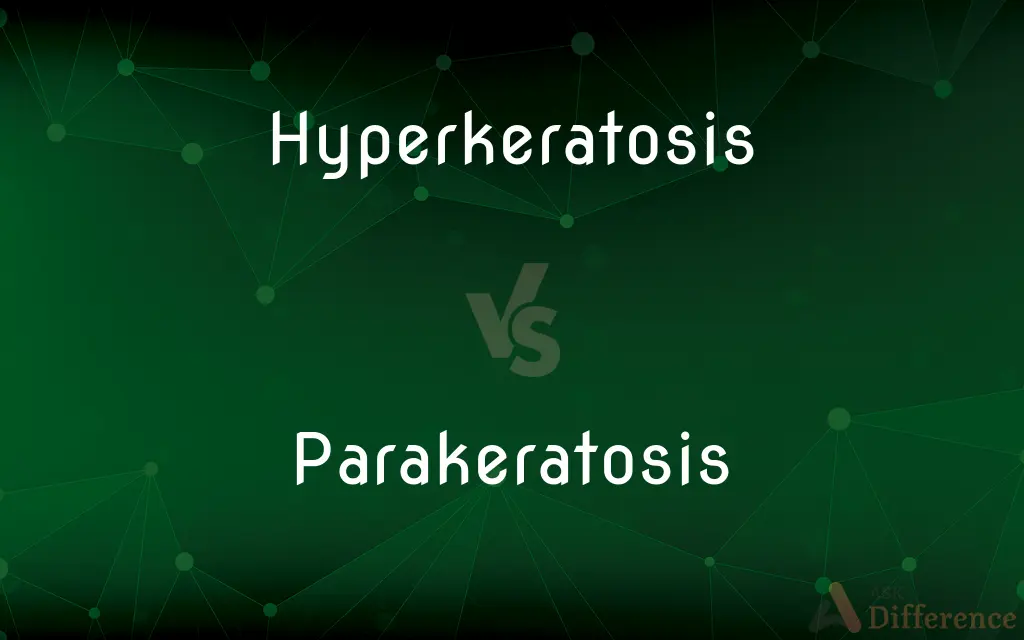Hyperkeratosis vs. Parakeratosis — What's the Difference?

Difference Between Hyperkeratosis and Parakeratosis
ADVERTISEMENT
Compare with Definitions
Hyperkeratosis
Hyperkeratosis is thickening of the stratum corneum (the outermost layer of the epidermis, or skin), often associated with the presence of an abnormal quantity of keratin, and also usually accompanied by an increase in the granular layer. As the corneum layer normally varies greatly in thickness in different sites, some experience is needed to assess minor degrees of hyperkeratosis.
Parakeratosis
Parakeratosis is a mode of keratinization characterized by the retention of nuclei in the stratum corneum. In mucous membranes, parakeratosis is normal.
Hyperkeratosis
Hypertrophy of the cornea or the horny layer of the skin.
Parakeratosis
(pathology) Retention of nuclei in the stratum corneum layer of skin.
Hyperkeratosis
(pathology) Excess keratin formation on the skin surface, as can be seen in a number of dermatologic conditions.
ADVERTISEMENT
Share Your Discovery

Previous Comparison
Road vs. Carriageway
Next Comparison
Precarity vs. Precariousness













































